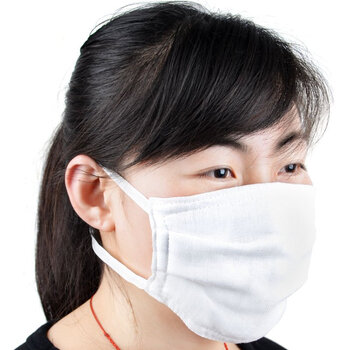6层以下的纱布口罩,几乎没用,至少需要12层以上的, 16层的更好。

美国所谓 N95 口罩或 呼吸器,一般超市,药店,homedepot 都有卖的,有一定作用。
绝对安全的口罩 是没有的, 除非不呼吸。
防化兵 全封闭 带呼吸器的 面罩,很安全, 但 不实用, 除非特殊情况。
即使活动期的肺结核,排菌 是 通过病人咳嗽 喷嚏 唾沫等 droplets 方式 排出的, 而非 每一口呼吸 呼出的。
换句话,假若 肺结核病人 平静 不咳嗽 与你 相处多少分钟或小时,基本 不会发生传染。
负压舱 和 负压单人病房,不是针对肺结核病人的,普及率差得远,不现实。
airborne 不是 air-in, breath-in, 是 droplets in air that are inspirated, inhaled in by the recipient.


The N95 Mask to Protect Against Tuberculosis
The N95 medical mask is a type of disposable respirator that may be used in a medical or industrial setting. Both types of N95 function by filtering out particulates in the air before they reach your respiratory system. Both the FDA and the National Institute for Occupational Safety and Health approve the use of N95 respirator masks to protect against tuberculosis transmission.
Indications For Use
N95 respirator masks would typically be used by medical professionals coming into contact with an individual with suspected or diagnosed active tuberculosis. Tuberculosis bacteria may pass through the air from an infected person to a non-infected person if the infected patient coughs. Wearing an N95 mask is a safety precaution if your work brings you in contact with a person believed to have active TB. Mask use would also be required of public health workers who oversee in-home administration of anti-TB drugs to patients receiving treatment for the active infection.
What is a N95?
According to the National Institute for Occupational Safety and Health (NIOSH) respiratory approval regulation (42 CFR 84) the term "N95" refers to a filter class, not a respirator.However, many filtering facepiece respirators have an "N95" class filter and many people refer to them, and have come to know them as "N95 respirators" or just "N95".
There are three designations given by NIOSH - N, R and P, see below. These letters refer to the filter's resistance to oil, such as lubricants, cutting fluids or glycerin. The 95 indicates its filter efficiency, such as 95%, 99% or 99.97%. Higher filter efficiencies means lower filter leakage.
Evaluation of N95 respirator use as a tuberculosis control measure in a resource-limited setting.
Abstract
SETTING:
OBJECTIVE:
DESIGN:
RESULTS:
CONCLUSION: